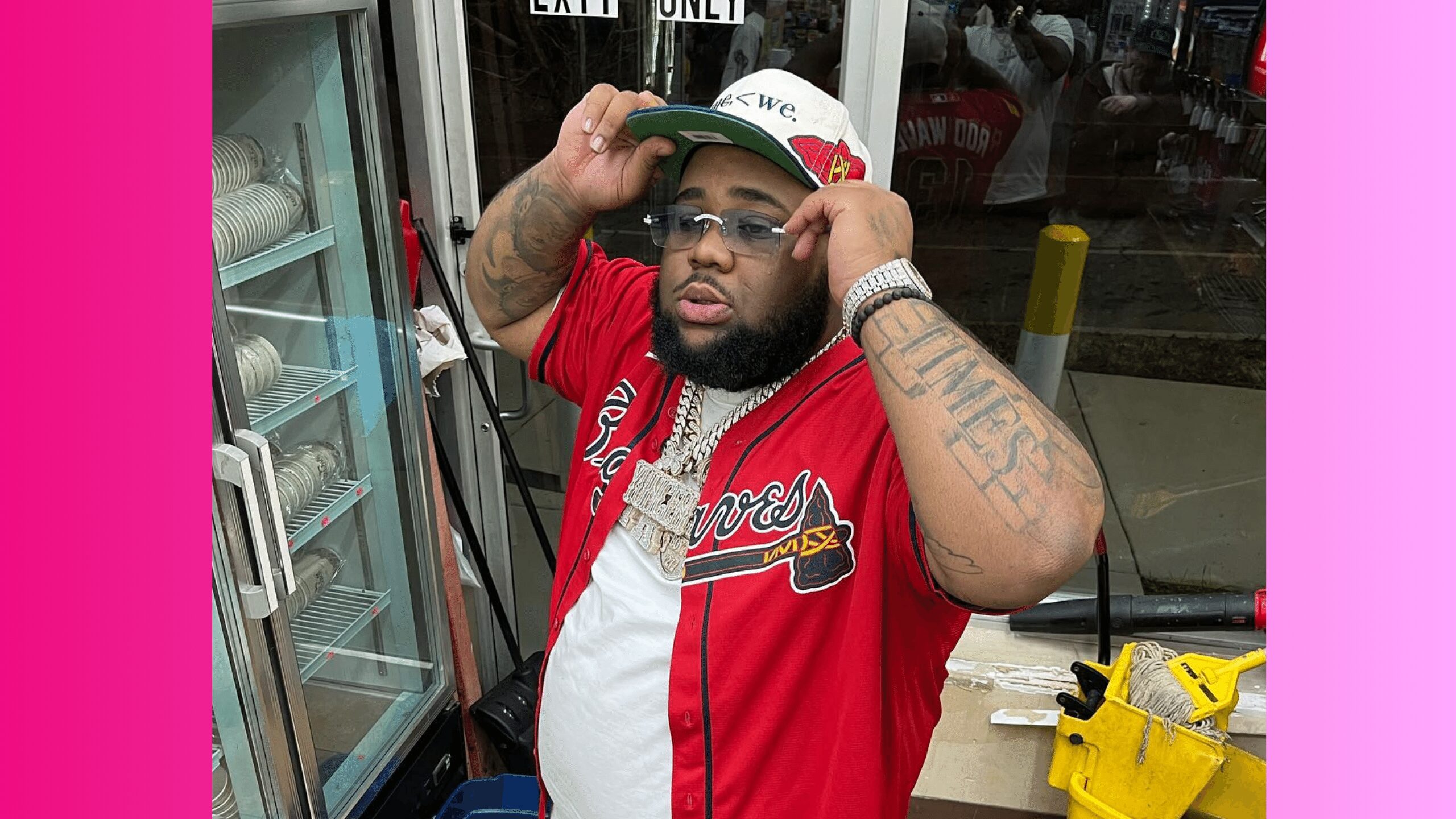Ever wondered what the hype around rod wave height is all about? Well, buckle up, because we’re diving deep into the world of fishing rods and understanding why rod wave height matters so much. If you’re a fishing enthusiast or just someone curious about the mechanics behind your favorite pastime, this article’s got you covered. So, let’s cast out some knowledge and reel in the facts!
Now, if you’re scratching your head thinking, "What on earth is rod wave height?" don’t sweat it. Most folks start out just as confused. But fear not, because by the end of this article, you’ll be the go-to expert on everything rod wave height related. We’ll break it down in simple terms so you can understand it without feeling like you’re drowning in technical jargon.
Let’s face it, fishing’s not just about throwing a line in the water and waiting for a bite. There’s a whole science behind it, and understanding concepts like rod wave height can make or break your fishing experience. So, whether you’re a pro angler or just starting out, this guide will help you navigate the waves of knowledge and catch some serious insights.
Read also:Stormi Maya Nude The Untold Story And Everything You Need To Know
What Exactly is Rod Wave Height?
Alright, let’s get to the nitty-gritty. Rod wave height refers to the maximum distance a fishing rod flexes or bends when under load. Think of it as the rod’s ability to absorb pressure and transfer energy efficiently. It’s kind of like how a spring works—stretch it too far, and it loses its bounce. Similarly, a rod that doesn’t have the right wave height can affect your fishing performance big time.
Here’s the deal: the wave height is crucial because it impacts how much control you have over the fish once it’s hooked. A rod with the right wave height allows you to feel every twitch and movement, giving you that edge you need to land the big one. Too much flex, and you might lose control. Not enough, and you risk snapping the line or even the rod itself. So, yeah, it’s kind of a big deal.
Why Should You Care About Rod Wave Height?
Imagine this: you’re out on the lake, the sun’s shining, and you’ve just hooked what feels like the catch of a lifetime. But then, BAM! The rod bends too much, and you lose the fish. Frustrating, right? That’s where rod wave height comes into play. It’s not just about landing the fish; it’s about making the experience enjoyable and efficient.
For beginners, understanding rod wave height can mean the difference between a successful fishing trip and one filled with disappointment. And for pros, it’s all about refining their technique and staying ahead of the competition. So, yeah, no matter where you stand in the fishing world, this knowledge is gold.
Measuring Rod Wave Height: The How-To Guide
So, how do you measure rod wave height? It’s not as complicated as it sounds. All you need is a little patience and some basic tools. Here’s a quick rundown:
- Start by attaching a weight to the tip of the rod. This simulates the pressure you’d experience when fishing.
- Measure the distance the rod tip moves from its original position. This is your wave height.
- Compare the measurement to the manufacturer’s specifications. This will give you an idea of how your rod performs under stress.
It’s important to note that different rods have different ideal wave heights. What works for one type of fishing might not work for another. So, always do your research and choose a rod that suits your specific needs.
Read also:Karen Fisher The Remarkable Journey Of An Influential Figure In Modern Times
Tools You Need to Measure Rod Wave Height
Now, let’s talk about the tools. You don’t need anything fancy, just a few basic items:
- A weight—this can be anything from a fishing lure to a small rock, as long as it’s consistent.
- A measuring tape or ruler—this will help you get an accurate measurement of the wave height.
- A stable surface—make sure your rod is securely mounted to avoid any unnecessary movement.
With these tools in hand, you’ll be measuring rod wave height like a pro in no time. And hey, who doesn’t love a good DIY project?
Factors Affecting Rod Wave Height
There are several factors that can affect rod wave height, and it’s important to understand them if you want to get the most out of your fishing experience. Here are a few key ones:
- Rod Material: Different materials have different flexibilities. Graphite rods, for example, tend to be stiffer, while fiberglass rods offer more flexibility.
- Rod Length: Longer rods generally have a greater wave height due to their increased leverage.
- Line Type: The type of fishing line you use can also impact wave height. Some lines are heavier and put more pressure on the rod.
Understanding these factors can help you make informed decisions when choosing a rod. It’s all about finding the right balance for your fishing style.
Choosing the Right Rod Based on Wave Height
When it comes to choosing a rod, wave height should be one of your top considerations. Here are a few tips to help you make the right choice:
- Consider the type of fish you’re targeting. Different species require different levels of wave height.
- Think about the fishing conditions. Are you fishing in calm waters or rough seas? This can affect the ideal wave height for your rod.
- Take into account your personal preferences. Some anglers prefer a stiffer rod, while others like more flexibility.
At the end of the day, the right rod is the one that feels comfortable in your hands and performs well under pressure. Trust your instincts, but don’t forget to do your research!
Common Misconceptions About Rod Wave Height
There are a few common misconceptions about rod wave height that we need to clear up. For starters, some people think that a higher wave height always means better performance. Not true. In fact, too much flex can actually hinder your ability to control the fish.
Another misconception is that rod wave height doesn’t matter as long as the rod is strong. Wrong again. Strength is important, but so is flexibility. A rod that’s too stiff might not absorb enough shock, leading to broken lines and lost fish.
So, what’s the takeaway here? Balance is key. You want a rod that’s strong enough to handle the pressure but flexible enough to give you control. It’s a delicate dance, but one that’s worth mastering.
Debunking the Myths
Let’s debunk a few more myths while we’re at it:
- Myth #1: Wave height is only important for big game fishing. False. It matters no matter what type of fishing you’re doing.
- Myth #2: Expensive rods always have better wave height. Not necessarily. Some affordable rods perform just as well as their pricier counterparts.
- Myth #3: Wave height doesn’t change over time. Wrong. Rods can wear out and lose their flexibility, affecting wave height.
Now that we’ve cleared up some of the confusion, let’s move on to the next big topic.
How Rod Wave Height Impacts Your Fishing Experience
So, how exactly does rod wave height impact your fishing experience? Well, it affects everything from how you feel the bite to how you set the hook. A rod with the right wave height allows you to detect even the slightest nibble, giving you a better chance at landing the fish.
It also plays a crucial role in setting the hook. If your rod has too much flex, you might not be able to set the hook properly, leading to missed opportunities. On the other hand, a rod that’s too stiff might cause the hook to pull out, resulting in the same outcome. It’s all about finding that sweet spot.
Tips for Improving Your Fishing Experience with Rod Wave Height
Here are a few tips to help you improve your fishing experience by optimizing rod wave height:
- Experiment with different rods to find the one that suits your style best.
- Regularly check your rod for signs of wear and tear. Replace it if necessary.
- Don’t be afraid to ask for advice from more experienced anglers. They might have some valuable insights to share.
Remember, fishing is as much about learning as it is about catching. So, keep an open mind and be willing to adapt as you go.
Conclusion: Mastering Rod Wave Height for Better Fishing
And there you have it, folks. A comprehensive guide to understanding and mastering rod wave height. Whether you’re a seasoned pro or a beginner, this knowledge can help you take your fishing game to the next level. So, go out there, measure those rods, and reel in some serious success!
Before you go, don’t forget to share your thoughts and experiences in the comments below. And if you found this article helpful, be sure to share it with your fellow anglers. Together, we can all become better fishermen—or women! Until next time, happy fishing!
Table of Contents
- What Exactly is Rod Wave Height?
- Why Should You Care About Rod Wave Height?
- Measuring Rod Wave Height: The How-To Guide
- Tools You Need to Measure Rod Wave Height
- Factors Affecting Rod Wave Height
- Choosing the Right Rod Based on Wave Height
- Common Misconceptions About Rod Wave Height
- Debunking the Myths
- How Rod Wave Height Impacts Your Fishing Experience
- Tips for Improving Your Fishing Experience with Rod Wave Height


